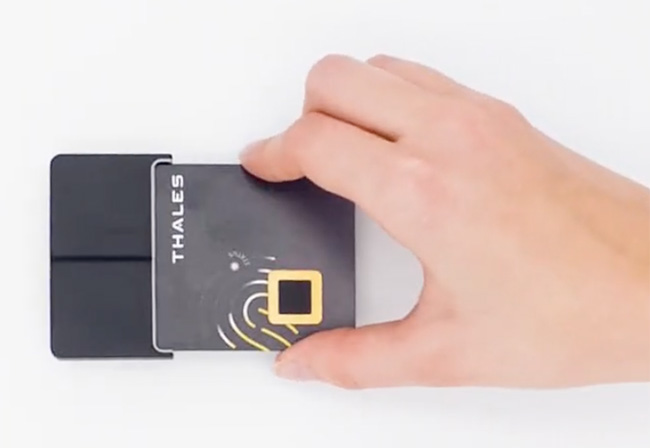The Future of Payment Systems: Why Biometric Cards Are the Next Big Thing

The evolution of payment systems is a significant part of the ongoing technological revolution. As consumer expectations shift towards faster, more secure, and more convenient ways to pay, traditional payment methods are increasingly falling short. Among the most promising innovations poised to change the future of financial transactions is the biometric card. This technology, which leverages biometric authentication to validate payments, is becoming the next big thing in payment security and convenience.
In this article, we’ll explore why biometric cards are expected to become a mainstream solution for securing transactions and how they are shaping the future of payment systems. For more detailed insights into how biometric cards are revolutionizing payment security, you can explore this solution.
What Is a Biometric Card?
A biometric card is a new type of payment card that incorporates biometric authentication, typically through fingerprint recognition, to verify the identity of the cardholder. Unlike traditional credit or debit cards that rely on a PIN or signature for validation, biometric cards use a built-in fingerprint scanner to authenticate the user. This biometric data is stored securely within the card itself, offering enhanced protection against fraud and unauthorized transactions.
The integration of biometrics into payment cards not only enhances security but also simplifies the payment process. Cardholders no longer need to memorize complex PINs or worry about exposing their signature. All they need to do is scan their fingerprint, and the transaction is verified instantly. This innovation is set to redefine how we think about payment security.
Why Biometric Cards Are the Future of Payment Systems
Enhanced Security
One of the main reasons biometric cards are becoming the next big thing is the significant boost they offer to payment security. Traditional cards, while still widely used, are increasingly vulnerable to fraud. Criminals can steal card details through skimming devices, data breaches, or even by simply guessing PIN codes. However, a biometric card offers a level of security that traditional cards simply cannot match.
Because biometric data is unique to each individual, it is almost impossible for a fraudster to replicate. Even if a card is stolen or lost, a criminal cannot access the account without the cardholder’s fingerprint. This adds a layer of protection that makes unauthorized transactions far less likely, providing both consumers and financial institutions with much-needed peace of mind.
Fraud Prevention
Fraud prevention is another key advantage of biometric cards. With the increasing sophistication of cybercriminals, identity theft has become a major concern for consumers and banks alike. Biometric authentication dramatically reduces the risk of identity theft because the user’s identity is verified through their unique biological features, which are virtually impossible to counterfeit. This creates a robust barrier against fraud and greatly improves the safety of financial transactions.
Moreover, biometric cards ensure that the person making a transaction is the legitimate cardholder. This is especially important in online or contactless transactions, where it can be difficult to verify the cardholder’s identity. By embedding fingerprint scanning into the card itself, these cards offer a secure and seamless solution for preventing fraudulent activity.
Increased Convenience for Users
Another significant benefit of biometric cards is the increased convenience they provide for users. Traditional payment methods often require multiple steps, such as entering a PIN or signing a receipt. These steps can be time-consuming and prone to errors. With biometric cards, authentication is fast and simple. Cardholders just need to place their finger on the built-in scanner, and the transaction is completed in seconds.
The simplicity of biometric verification not only improves the user experience but also reduces friction in the payment process. This is particularly useful for busy consumers who want to make quick and secure transactions without delays.
Greater Acceptance and Integration
As the technology behind biometric cards continues to improve, their adoption will likely expand across various industries. Financial institutions are already exploring ways to integrate biometric authentication into their services, including credit cards, debit cards, and even mobile payments. As more banks and retailers adopt biometric cards, consumers will likely find it easier to use them for everyday purchases, both in physical stores and online.
With the continued rise of digital payments, integrating biometric authentication into cards could become a standard practice. The potential for widespread adoption of biometric cards will pave the way for more secure and streamlined payment systems globally, making them a cornerstone of the future of financial transactions.
The Future of Biometric Cards in the Global Payment Ecosystem
As biometric technology becomes more refined and accessible, it’s only a matter of time before biometric cards become an integral part of the global payment ecosystem. They promise to address the major pain points of current payment systems, from security vulnerabilities to slow and inconvenient transaction processes. With their combination of advanced security features, ease of use, and potential for global integration, biometric cards are positioned to reshape the future of payments.
Banks, financial institutions, and tech companies are already investing heavily in biometric card technology. The rollout of these cards is expected to increase in the coming years as consumer demand for more secure and efficient payment solutions grows. Additionally, the development of other biometric verification methods, such as facial recognition or iris scanning, may further enhance the functionality of biometric cards in the future.
Conclusion
The future of payment systems lies in innovation, and biometric cards are at the forefront of this transformation. They offer a compelling solution to the ongoing challenges of fraud, identity theft, and transaction speed. With the integration of biometric authentication, these cards deliver a level of security and convenience that traditional payment methods simply cannot match.
As technology continues to evolve, we can expect biometric cards to become a standard feature in the payment landscape, helping to create a safer and more efficient financial environment for consumers worldwide. Financial institutions and payment processors will play a crucial role in shaping this future, and biometric cards are poised to be the key to unlocking the next generation of payment security.







